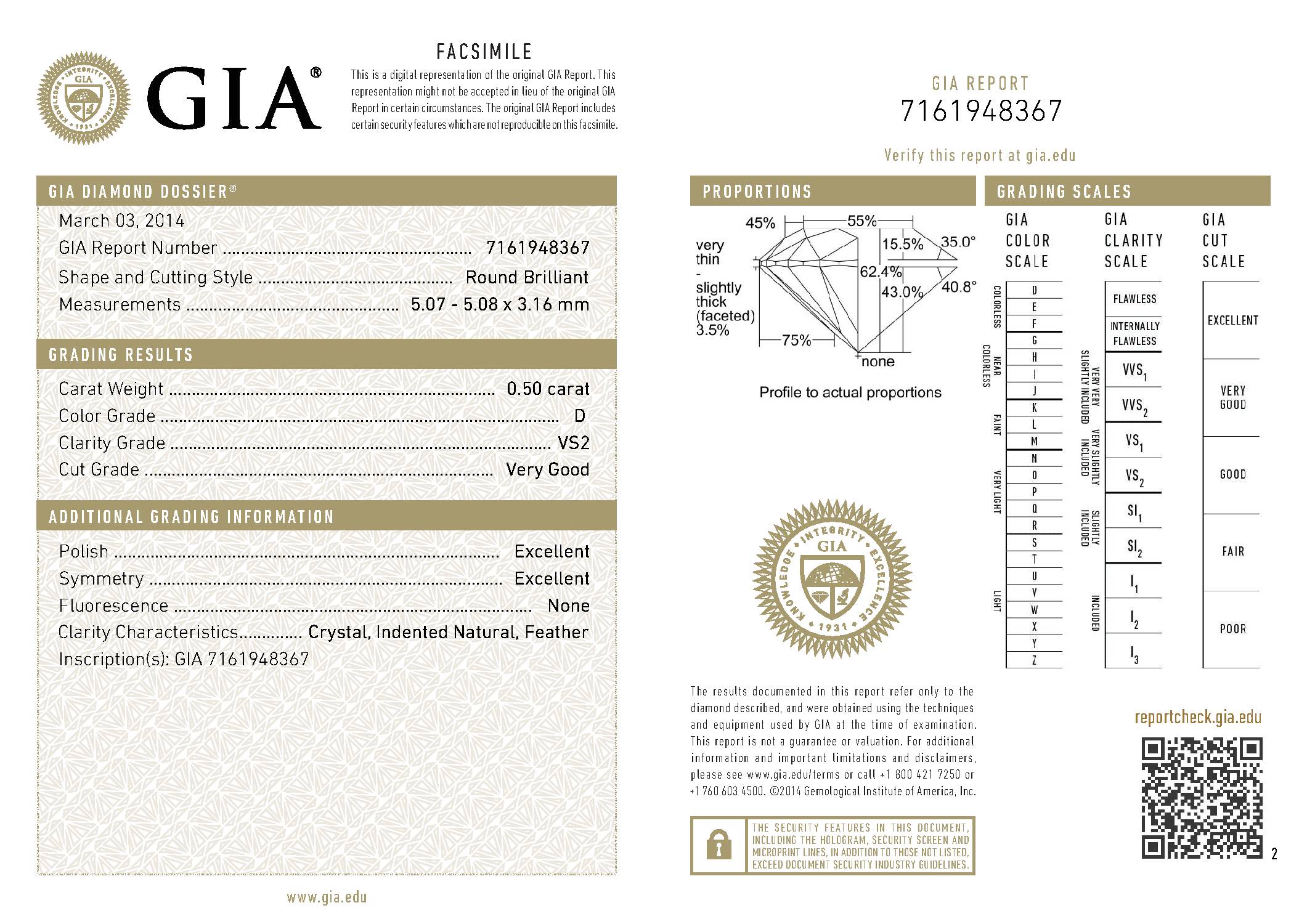
Diamond Grading Report
A Diamond Grading Report documents the diamond’s unique characteristics. Performed by an independent gemological laboratory, the report examines and identifies the 4Cs: cut, color, clarity, carat weight-plus finish, fluorescence, and symmetry. The lab will also include the physical characteristics of the stone. It is important to keep in mind that diamond grading is subjective. Two labs may grade a diamond differently so it is critical to obtain a report from a lab that is trustworthy and has a reputation for reliability. The American Gemological Society (AGS), International Gemological Institute (IGI), Gemological Institute of America (GIA), and European Gemological Laboratory (EGL), are a few reputable organizations that provide such grading reports. Diamond grading reports do not give the retail value of the stone, for this you will need an appraisal.
GIA:

At Eye for Gems we provide a retail replacement appraisal based on market data. This can be used for insurance purposes.
Quick Facts
Appraisal
It is possible for an appraisal to be performed on a loose or mounted diamond or any other type of jewelry. If the stone is mounted, then the physical properties are analyzed using various techniques that are very similar to the diamond grading process. The 4Cs, carat, clarity, cut and the color is all assessed, and the combination of those factors aid in determining the monetary value of the diamond. The main purpose of an appraisal is to estimate the monetary value of the piece, generally for insurance purposes. Keep in mind an appraisal is an opinion of value based upon market conditions.
The appraiser should be totally unbiased, independent, and not be trying to sell you ‘one of his own’. IGI is one of the largest appraising firms in the industry but there are many independent appraisers. The key is to find someone you trust and make sure they have the credentials to appraise jewelry. Gemological training is crucial. Choose a professional jewelry appraiser who is a credentialed member of a nationally recognized jewelry appraisal organization, such as the American Society of Appraisers (ASA), International Society of Appraisers ISA, and American Gem Society AGS, as well as a Graduate Gemologist (GG) of the Gemological Institute of America (GIA).
Estimating the Replacement Value
What does an Appraisal include?
- Identity of the diamond
- Measurements and weights of the stones
- Relevant treatment information
- Description of the stone (carat, clarity, and color)
- Approximate weight and description of the mounting
- Cleaning and thorough inspection of the piece
- Photograph
- Appraiser’s credentials
- Certification of appraisal practices
